
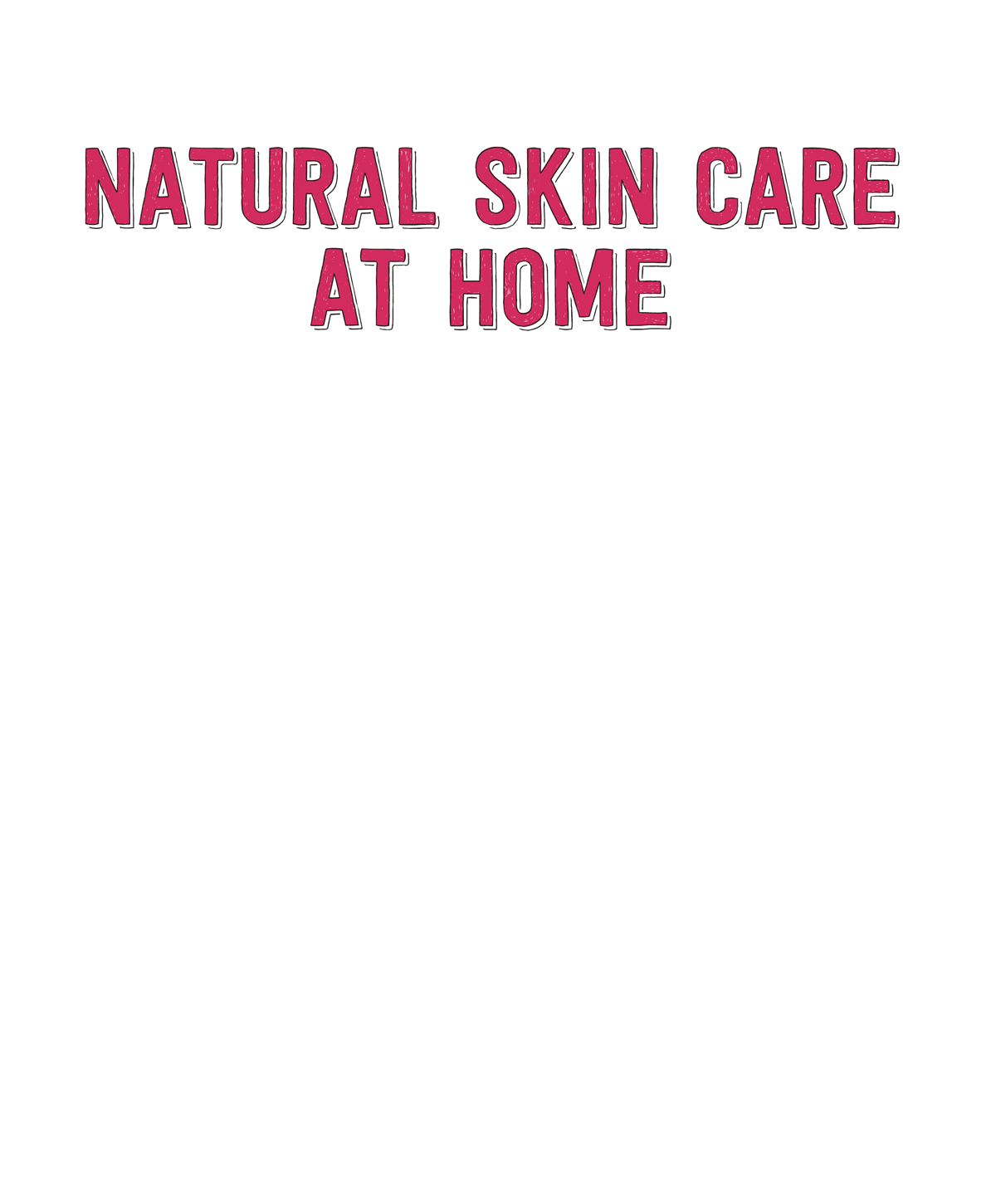
Also by Liz McQuerry
Natural Soap at Home Text and photographs copyright 2020 by Liz McQuerry All rights reserved. No part of this book may be reproduced in any manner without the express written consent of the publisher, except in the case of brief excerpts in critical reviews or articles. All inquiries should be addressed to Skyhorse Publishing, 307 West 36th Street, 11th Floor, New York, NY 10018. Skyhorse Publishing books may be purchased in bulk at special discounts for sales promotion, corporate gifts, fund-raising, or educational purposes. Special editions can also be created to specifications. For details, contact the Special Sales Department, Skyhorse Publishing, 307 West 36th Street, 11th Floor, New York, NY 10018 or .
Skyhorse and Skyhorse Publishing are registered trademarks of Skyhorse Publishing, Inc., a Delaware corporation. Visit our website at www.skyhorsepublishing.com. 10 9 8 7 6 5 4 3 2 1 Library of Congress Cataloging-in-Publication Data is available on file. Cover design by Laura Klynstra Cover photo credit: Liz McQuerry Print ISBN: 978-1-5107-4469-1 Ebook ISBN: 978-1-5107-4470-7 Printed in China  This book is devoted to you, dear reader. These are all my top-secret recipes. May they bring you great pleasure in creating, using, and sharing.
This book is devoted to you, dear reader. These are all my top-secret recipes. May they bring you great pleasure in creating, using, and sharing.
Thank you for your supportI adore you.  Contents
Contents  Your Introduction to At-Home Skin Care Take your skin care into your own hands! With this book, youll learn basic recipes and easy-to-follow prompts with clearly laid out ingredients to formulate the recipes for your own skin needs. Skin care has come a long way from the days of humans painting their skin with Spirits of Saturn (a.k.a. venetian ceruse, a.k.a. lead) to get the whitest skin possible, leaving the skin gray and lifeless under the white painted faces, causing hair loss, and poisoning the wearers body and mind for the sake of beauty. (Not to mention, most products from nature are purely good for you with zero negative side effects.) How to Use This Book Although this is structured like a basic recipe book, and indeed you can look up any recipe and make it just like a cookbook, this is also far more than a simple collection of recipes. (Not to mention, most products from nature are purely good for you with zero negative side effects.) How to Use This Book Although this is structured like a basic recipe book, and indeed you can look up any recipe and make it just like a cookbook, this is also far more than a simple collection of recipes.
Your Introduction to At-Home Skin Care Take your skin care into your own hands! With this book, youll learn basic recipes and easy-to-follow prompts with clearly laid out ingredients to formulate the recipes for your own skin needs. Skin care has come a long way from the days of humans painting their skin with Spirits of Saturn (a.k.a. venetian ceruse, a.k.a. lead) to get the whitest skin possible, leaving the skin gray and lifeless under the white painted faces, causing hair loss, and poisoning the wearers body and mind for the sake of beauty. (Not to mention, most products from nature are purely good for you with zero negative side effects.) How to Use This Book Although this is structured like a basic recipe book, and indeed you can look up any recipe and make it just like a cookbook, this is also far more than a simple collection of recipes. (Not to mention, most products from nature are purely good for you with zero negative side effects.) How to Use This Book Although this is structured like a basic recipe book, and indeed you can look up any recipe and make it just like a cookbook, this is also far more than a simple collection of recipes.
This book will essentially provide you with a solid toolbelt from which you can formulate your own recipes without having a degree in science, dermatology, or cosmetology. Each recipe is written for an average skin/hair type, but with a little perusing of the ingredients, you will quickly learn what you should plug into the recipes to make the products work for you. Many recipes include prompts that will give you clear directions to reformulate according to your skin type. The first part introduces a variety of ingredients and is easy to reference. These ingredients have been summarized for convenience; if you choose to really get into skin care later, youll find that the scientific information available on each is incredible, but unfortunately I cant cover all that here. (That would be an entirely different and very large book, so I leave that part up to you.) Once we review the ingredients, you will find recipes starting with your hair and ending at your toenailsliterally, head to toe.
And once youve picked a few recipes to make at home that you enjoy, you can come back to check out how to package them to gift to others. Lets get started! 
 Ingredients Its no secret: ingredients from nature are incredible. I like the idea of making all skin care edible, because if you wouldnt put it inside your body, you must ask yourself: Should I even be putting this on my skin? Oils The oils chart on , while not entirely extensive, covers the oils used in the recipes in this book, categorized by skin type with a little information and comedogenic rating. The comedogenic scale rates oils based on how likely they are to clog pores. This is important to be mindful of for people who are prone to acne and breakouts, as a likely-to-clog-pores oil is also likely to create blemishes. On the other hand, this scale can be used to choose a heavier oil that will stay on the skin extra long if youre prone to dry skin.
Ingredients Its no secret: ingredients from nature are incredible. I like the idea of making all skin care edible, because if you wouldnt put it inside your body, you must ask yourself: Should I even be putting this on my skin? Oils The oils chart on , while not entirely extensive, covers the oils used in the recipes in this book, categorized by skin type with a little information and comedogenic rating. The comedogenic scale rates oils based on how likely they are to clog pores. This is important to be mindful of for people who are prone to acne and breakouts, as a likely-to-clog-pores oil is also likely to create blemishes. On the other hand, this scale can be used to choose a heavier oil that will stay on the skin extra long if youre prone to dry skin.
This scale is loose, as everyones skin type will vary and be affected differently. OIL SCALE 0: will not clog pores 1: low chance of clogging pores 2: mild chance of clogging pores 3: medium chance of clogging pores 4: quite likely will clog pores 5: almost guaranteed to clog pores NOTE When youre measuring oils, remember that 40 drops equals 1 gram. And 28 grams equals 1 ounce. Based on this scale, non-comedogenic encompasses 02 ratings. These are seen as generally safe for use on skin types prone to acne. While the comedogenic scale may be helpful, its important to keep in mind the inherent actions of certain oils.
You may choose to use a little of certain oils in a formulation because of their powerful skin care benefits even if the comedogenic number isnt the best fit for you. Carrier oils such as sunflower, olive, and coconut can be used to make herbal oils; they are often used as a base in skin care formulas and to dilute more potent ingredients like essential oils and highly concentrated oils. Only the carrier oils are labeled carrier ; all others are concentrated. Concentrated oils have really high vitamin and mineral content. A little of these type of oils goes a long way, and many of them require dilution, while a few can be used straight on the skin. The following chart on oils is not absolute; you may find varying information.
Go with what works for your skin. 

 *Squalene/Squalane: Our skin naturally produces this, but over time we produce less and our skin loses its plumpness and elasticity. Be certain if you use this that it is plant derived, as its also found and harvested from shark liver.
*Squalene/Squalane: Our skin naturally produces this, but over time we produce less and our skin loses its plumpness and elasticity. Be certain if you use this that it is plant derived, as its also found and harvested from shark liver. 

Next page
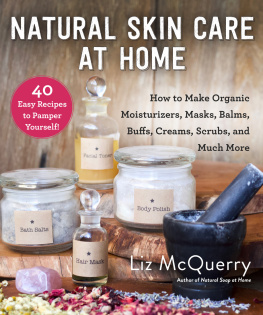
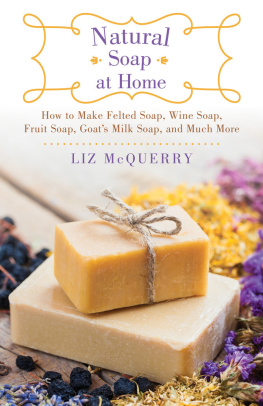




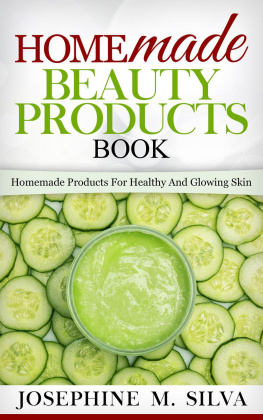
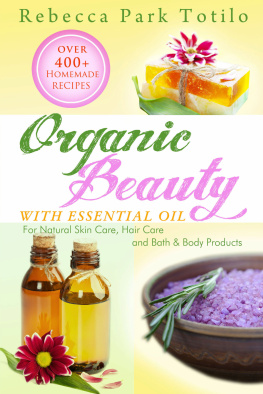
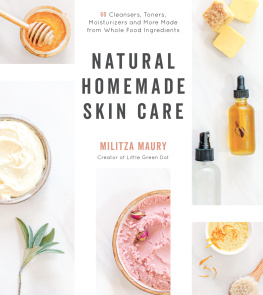
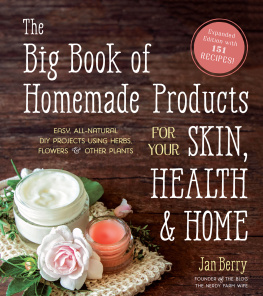


 This book is devoted to you, dear reader. These are all my top-secret recipes. May they bring you great pleasure in creating, using, and sharing.
This book is devoted to you, dear reader. These are all my top-secret recipes. May they bring you great pleasure in creating, using, and sharing. Contents
Contents  Your Introduction to At-Home Skin Care Take your skin care into your own hands! With this book, youll learn basic recipes and easy-to-follow prompts with clearly laid out ingredients to formulate the recipes for your own skin needs. Skin care has come a long way from the days of humans painting their skin with Spirits of Saturn (a.k.a. venetian ceruse, a.k.a. lead) to get the whitest skin possible, leaving the skin gray and lifeless under the white painted faces, causing hair loss, and poisoning the wearers body and mind for the sake of beauty. (Not to mention, most products from nature are purely good for you with zero negative side effects.) How to Use This Book Although this is structured like a basic recipe book, and indeed you can look up any recipe and make it just like a cookbook, this is also far more than a simple collection of recipes. (Not to mention, most products from nature are purely good for you with zero negative side effects.) How to Use This Book Although this is structured like a basic recipe book, and indeed you can look up any recipe and make it just like a cookbook, this is also far more than a simple collection of recipes.
Your Introduction to At-Home Skin Care Take your skin care into your own hands! With this book, youll learn basic recipes and easy-to-follow prompts with clearly laid out ingredients to formulate the recipes for your own skin needs. Skin care has come a long way from the days of humans painting their skin with Spirits of Saturn (a.k.a. venetian ceruse, a.k.a. lead) to get the whitest skin possible, leaving the skin gray and lifeless under the white painted faces, causing hair loss, and poisoning the wearers body and mind for the sake of beauty. (Not to mention, most products from nature are purely good for you with zero negative side effects.) How to Use This Book Although this is structured like a basic recipe book, and indeed you can look up any recipe and make it just like a cookbook, this is also far more than a simple collection of recipes. (Not to mention, most products from nature are purely good for you with zero negative side effects.) How to Use This Book Although this is structured like a basic recipe book, and indeed you can look up any recipe and make it just like a cookbook, this is also far more than a simple collection of recipes.
 Ingredients Its no secret: ingredients from nature are incredible. I like the idea of making all skin care edible, because if you wouldnt put it inside your body, you must ask yourself: Should I even be putting this on my skin? Oils The oils chart on , while not entirely extensive, covers the oils used in the recipes in this book, categorized by skin type with a little information and comedogenic rating. The comedogenic scale rates oils based on how likely they are to clog pores. This is important to be mindful of for people who are prone to acne and breakouts, as a likely-to-clog-pores oil is also likely to create blemishes. On the other hand, this scale can be used to choose a heavier oil that will stay on the skin extra long if youre prone to dry skin.
Ingredients Its no secret: ingredients from nature are incredible. I like the idea of making all skin care edible, because if you wouldnt put it inside your body, you must ask yourself: Should I even be putting this on my skin? Oils The oils chart on , while not entirely extensive, covers the oils used in the recipes in this book, categorized by skin type with a little information and comedogenic rating. The comedogenic scale rates oils based on how likely they are to clog pores. This is important to be mindful of for people who are prone to acne and breakouts, as a likely-to-clog-pores oil is also likely to create blemishes. On the other hand, this scale can be used to choose a heavier oil that will stay on the skin extra long if youre prone to dry skin.

 *Squalene/Squalane: Our skin naturally produces this, but over time we produce less and our skin loses its plumpness and elasticity. Be certain if you use this that it is plant derived, as its also found and harvested from shark liver.
*Squalene/Squalane: Our skin naturally produces this, but over time we produce less and our skin loses its plumpness and elasticity. Be certain if you use this that it is plant derived, as its also found and harvested from shark liver. 
